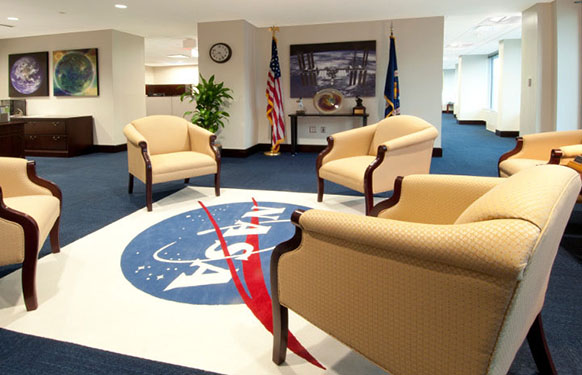Conflict in organizations is usually assumed to be bad. The traditional conflict management dogma includes assumptions that conflict:
- Can, and should, be avoided
- Is caused by individuals’ personality problems
- Results in dramatic reactions by those involved
- Creates alienation
However, managers have also been encouraged to emphasize the constructive effects of conflict. Conflict can:
- Alert individuals to other information and experiences
- Get people involved
- Clear the air so individuals can resume productive activities
- Open different channels of communication
Conflict Management Is Not Conflict Resolution
Conflict resolution is a short-term fix. Disputes are resolved to the satisfaction of one or both parties.
Conflict management is a long-term, ongoing process of managing difficult situations and disputes. The goal of conflict management is not to reach a resolution, but to mediate the conflict or to manage a grievance. For example, feuds and avoidance typically have no resolutions. Teamwork is also a form of conflict management, but there is no resolution.
Conflict management is, therefore, a general term used to describe a variety of ways people handle grievances. The kind of conflict management used in any given situation may be predicted based on the particular social structure of the organization or group. Negative, less productive, methods include:
- Gossip
- Ridicule
- Feuding
- Terrorism
- Avoidance
A more constructive conflict management focus includes:
- Improved, open communication
- Teamwork
- A systematic approach toward equitable coexistence
- Flexibility
Conflict Development Stages
Conflict generally does not just happen. It has a root cause, festers, and can (but does not always) pass through stages of development until it reaches its aftermath. The observant manager can detect conflict developing:
- Stage 1: Latent conflict
Conflict conditions exist, but are not as yet recognized. - Stage 2: Perceived conflict
Cause of conflict is recognized by one or both of the participants. - Stage 3: Felt conflict
Tension exists, but not outward struggle. - Stage 4: Manifest conflict
Conflict becomes apparent to others. - Stage 5: Conflict aftermath
Conflict is ended by resolution or suppression; new conditions are established that will result in cooperation or a new, possibly more severe, conflict.
Types of Conflict
Conflicts may be a process internal to the individual (intrapersonal) or external to the individual (structural, interpersonal, or strategic). Knowing what type of conflict is at the heart of the immediate chaos aids the manager in problem solving and achieving a fast, sustainable agreement between the parties. Types of conflict include the following:
- Intrapersonal: Result of individual frustration due to some internal and personal need not being met. The motive is blocked before the goal is achieved. The individual responsible for blocking the motive will typically become the target for conflict.
- Structural: Not tied to individual roles within the organization. These conflicts are due to individual departmental goals and feelings of entitlement, preference, and dependence.
- Interpersonal: Result when there are barriers to communication, when individuals are dissatisfied with their roles compared to the roles of others, or when there are prejudices based on race, gender, and/or ethnicity.
- Strategic: Result from a promotion of self-interest. The individual has a clear goal, and those who block the way are considered adversaries.
Standard Methods for Managing Conflict
For managers/supervisors, standard methods are used to manage interpersonal conflict situations. The manager may:
- Separate the participants
- Rationalize the conflict and pretend it never happened and doesn’t exist
- Offer a compromise in an effort to end the conflict
- Request third-party intervention in an effort to end the conflict
- Arrange a confrontation between the participants in an effort to determine the underlying cause
A confrontation is typically the most effective method of problem solving and ending the conflict. The risk, however, is that the conflict could escalate beyond the first-tier management level.
A Visual Model of Conflict Management: The Manager’s Role
Conflict management considers the manager the intervening force. It is not the manager’s responsibility to resolve the conflict. The manager’s responsibility is to be the referee and counselor in helping the participants reach an acceptable agreement.
The Participants’ Behavior: The Conflict Interface
Management of the conflict interface is based on observation of the participants’ behaviors as the conflict develops. Understanding the type of conflict and level of conflict development will help the manager maximize constructive aspects, decrease destructive consequences, and hasten an end agreement between the parties.
The Second-Tier of Conflict Management
Upper-level management should not become involved in employee conflicts. However, when strategic or structural conflicts arise, the consequences can impact other departments within the organization, or even externally. If the conflict or its aftermath has made environmental conditions intolerable, second-tier management will step in and make necessary decisions and/or changes in an effort to restore order.
Negotiation
Confrontation and negotiation involve risk. Also, there is no guarantee that confrontations or negotiations will be completely productive. There is always a chance emotions will grow out of control, or the discussion will divert from the original conflict focus.
Win/Win, Win/Lose Strategies
Negotiations are more successful when managers from opposing sides adopt a win/win strategy and encourage participants to do likewise. A win/win strategy demands the participants adopt a positive attitude and come to the table intending to come to some agreement beneficial to both parties. Although this strategy begins with the honest intent of open communication and discussion of a mutual problem in a nonthreatening, nonconfrontational environment, understanding of the basic criteria for civilized discussion can change during the negotiation process. When each side is determined to defeat the other, negotiations deteriorate into a win/lose strategy, and negotiations predictably fail.
Third-Party Mediators
Third-party mediators are normally called in when negotiations break down. Third-party mediators are mandatory when relationships have deteriorated due to:
- Intense and enduring negativity
- Suspicion and lack of cooperation among members, as well as between groups
- Attitudes and closed minds, which block creative proposals
The third-party consultant’s job is to:
- Separate people from the problem
- Define and focus on discussing the issue, rather than each party’s interest
- Set results criteria and work toward altering attitudes
- Reestablish clear communication
- Serve as interpreter of messages between the parties
- Expose stereotypes
- Raise awareness of each group’s positive intentions




